
- For PC
- For MAC
- For Linux
- OS: Windows 10 (64 bit)
- Processor: Dual-Core 2.2 GHz
- Memory: 4GB
- Video Card: DirectX 11 level video card: AMD Radeon 77XX / NVIDIA GeForce GTX 660. The minimum supported resolution for the game is 720p.
- Network: Broadband Internet connection
- Hard Drive: 23.1 GB (Minimal client)
- OS: Windows 10/11 (64 bit)
- Processor: Intel Core i5 or Ryzen 5 3600 and better
- Memory: 16 GB and more
- Video Card: DirectX 11 level video card or higher and drivers: Nvidia GeForce 1060 and higher, Radeon RX 570 and higher
- Network: Broadband Internet connection
- Hard Drive: 75.9 GB (Full client)
- OS: Mac OS Big Sur 11.0 or newer
- Processor: Core i5, minimum 2.2GHz (Intel Xeon is not supported)
- Memory: 6 GB
- Video Card: Intel Iris Pro 5200 (Mac), or analog from AMD/Nvidia for Mac. Minimum supported resolution for the game is 720p with Metal support.
- Network: Broadband Internet connection
- Hard Drive: 22.1 GB (Minimal client)
- OS: Mac OS Big Sur 11.0 or newer
- Processor: Core i7 (Intel Xeon is not supported)
- Memory: 8 GB
- Video Card: Radeon Vega II or higher with Metal support.
- Network: Broadband Internet connection
- Hard Drive: 62.2 GB (Full client)
- OS: Most modern 64bit Linux distributions
- Processor: Dual-Core 2.4 GHz
- Memory: 4 GB
- Video Card: NVIDIA 660 with latest proprietary drivers (not older than 6 months) / similar AMD with latest proprietary drivers (not older than 6 months; the minimum supported resolution for the game is 720p) with Vulkan support.
- Network: Broadband Internet connection
- Hard Drive: 22.1 GB (Minimal client)
- OS: Ubuntu 20.04 64bit
- Processor: Intel Core i7
- Memory: 16 GB
- Video Card: NVIDIA 1060 with latest proprietary drivers (not older than 6 months) / similar AMD (Radeon RX 570) with latest proprietary drivers (not older than 6 months) with Vulkan support.
- Network: Broadband Internet connection
- Hard Drive: 62.2 GB (Full client)
The U.S. Navy and Marine Corps were at the forefront of developing dive bombing techniques during the inter-war years and ordered numerous small batches of bombers from several manufacturers including Northrop. By 1939 they were flying a motley assortment of biplanes and monoplanes, none entirely satisfactory. Northrop had been taken over by the Douglas Aircraft Company and were developing an improved version of their BT-1 (Bomber manufactured by NorThrop, not to be confused with Soviet light tanks!), now designated SBD (Scout Bomber manufactured by Douglas) and named “Dauntless”.
The SBD corrected handling problems of the BT-1 and retained the perforated split dive flaps that allowed for controlled near-vertical diving, essential for accurate attacks. Small batches of SBD-1 and -2 variants were deployed for evaluation; further modifications made in readiness for combat included the addition of armour plating, a bullet-proof windscreen and self-sealing fuel tanks. The resulting SBD-3 was just entering service when Pearl Harbor was attacked in December 1941.
As in history, dive bombing in War Thunder is an accurate method of attack. The Dauntless typically started attacks from an altitude of 10-15,000 feet (3000 – 4500 metres) where the pilot would throttle back, extend dive brakes (by default assigned to the ‘H’ key in War Thunder) and dive at an angle of 70 degrees. Bombs were released between 1500 and 500 feet (450 to 150 metres), dive brakes retracted and the engine throttled up again as the pilot pulled out of the dive. This method works well in the game in Realistic and Simulator modes; in Arcade a player can take some liberties such as not using dive brakes as there is no need to worry about overstressing the airframe, although they can still be useful to more carefully line up an attack.
The finest hour of the SBD-3 was undoubtedly the Battle of Midway where they sank four Japanese aircraft carriers, a crippling blow that marked the turning point of the Pacific War. Naval maps are slightly unusual in War Thunder, when they do appear the Dauntless is ideally suited, able to operate from aircraft carriers and strike enemy capital ships. SBDs also operated on land, the mainstay of Marine bombing squadrons providing close air support to their comrades on the ground throughout the Pacific. This role is replicated in Ground Strike missions; for these the SBD’s 1,000lb bomb is ideal against hard targets, and the twin .50 caliber machine guns are excellent for strafing artillery, AA and armoured cars.
PROS AND CONS OF THE VEHICLE:
|
|
The MGs are also potent weapons against enemy aircraft, especially in Rank 1; if you can get the drop on an unsuspecting opponent the Dauntless makes a reasonable makeshift fighter. Though the claims are difficult to verify figures suggest the Dauntless had more air-to-air kills than losses during the war, impressive for a bomber! Attempting to run from enemy fighters is not the best idea; the SBD-3 gained nicknames including the somewhat sarcastic “Speedy Three” and more accurately “Slow But Deadly”. Dodging, weaving and timely use of air brakes can throw an opponent off, as can the twin .30 caliber MGs of the rear gunner. The air brakes are also useful in Domination missions to rapidly dump speed when landing to capture an airfield.
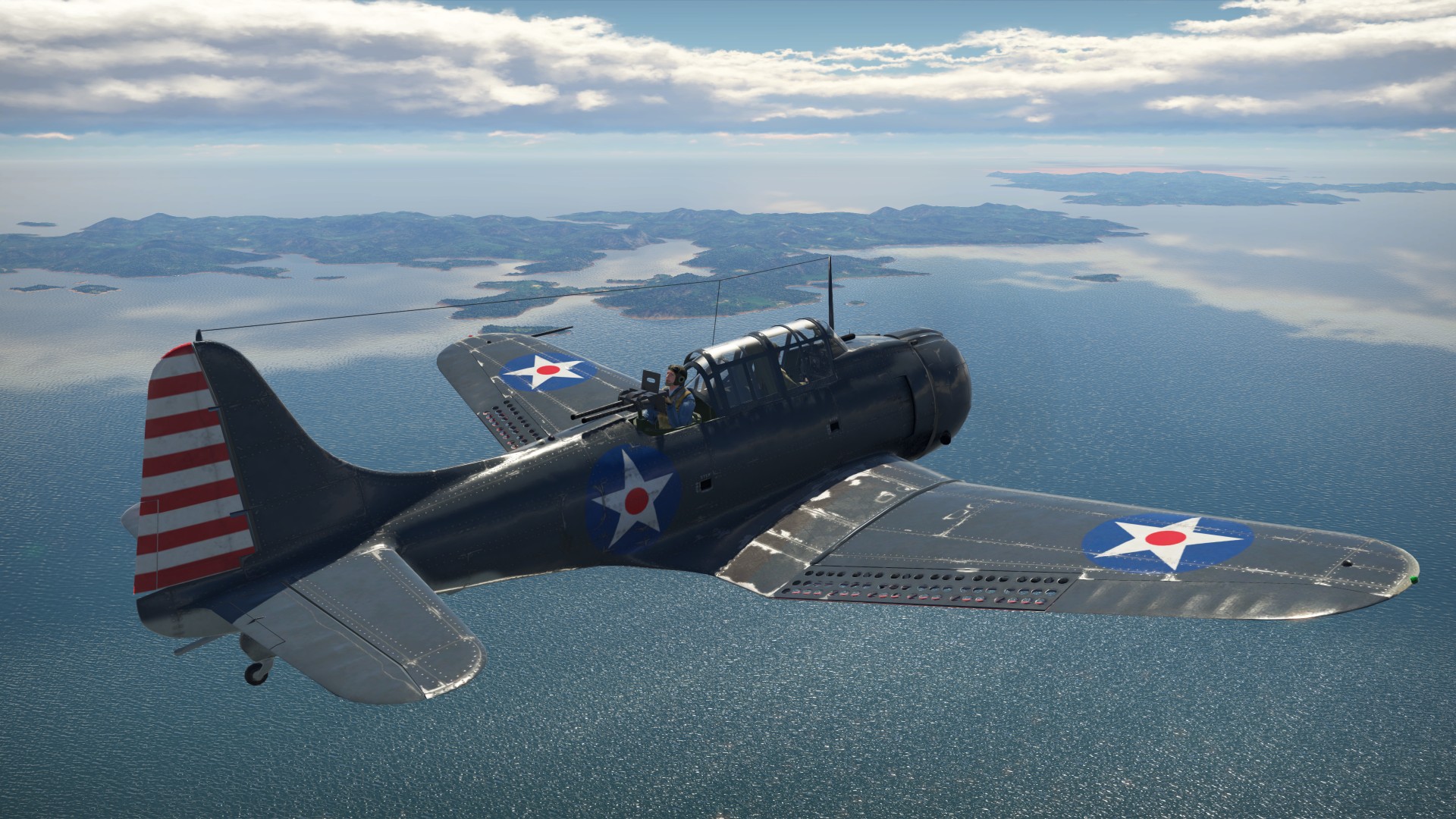 |
 |
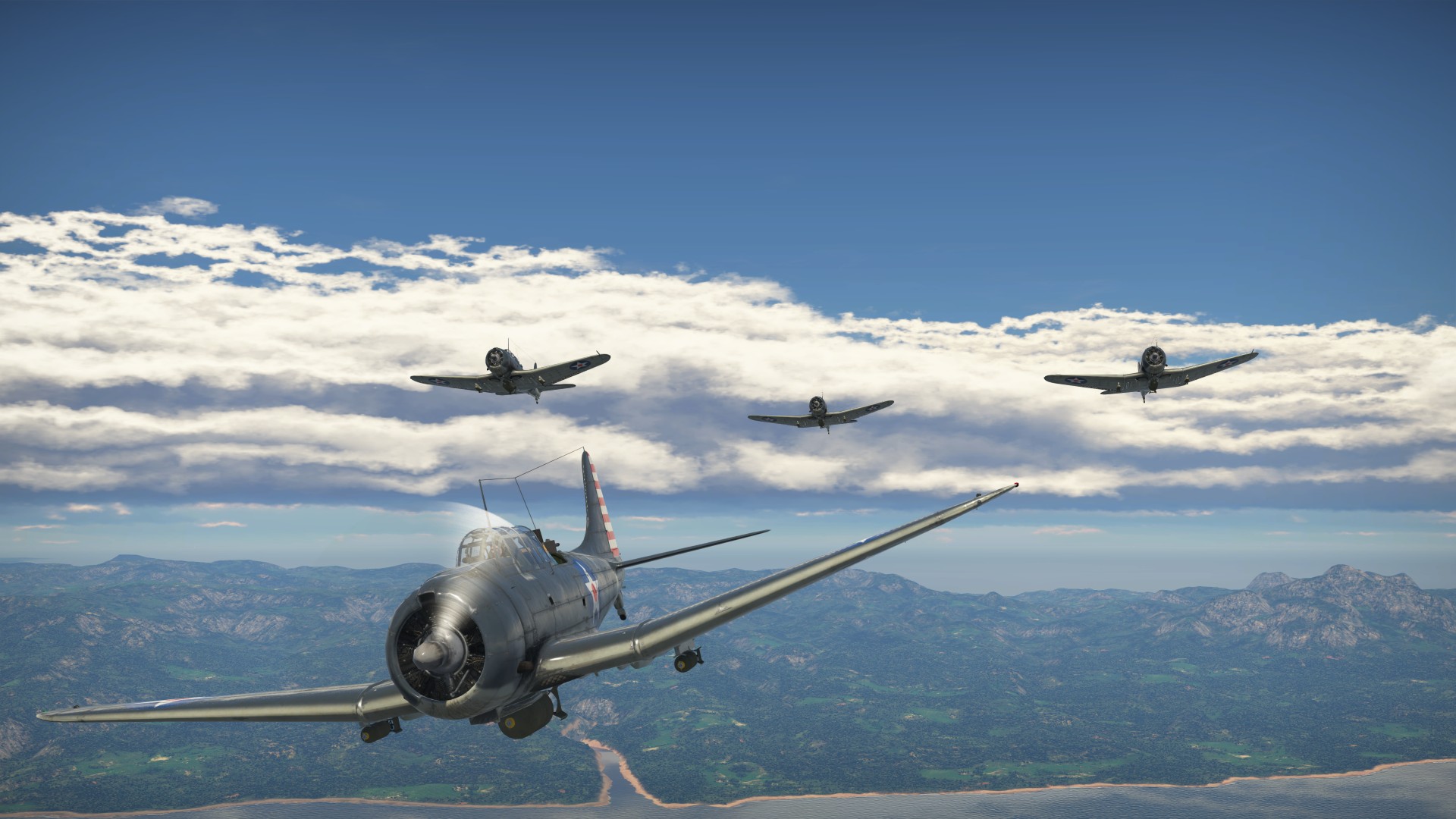 |
The Dauntless was intended as an interim stop-gap; the Navy really wanted the faster SB2C Helldiver that was capable of carrying a heavier bomb load. Though first flown in December 1940 teething troubles meant the SB2C did not see combat until November 1943, so the SBD soldiered on with SBD-4, -5 and -6 variants, the latter with more powerful engines. The Army also placed an order for a land-based variant, the A-24 Banshee, but never fully embraced dive bombing so it saw limited use. Dauntlesses were involved in all the major carrier-vs-carrier engagements of the war and even saw post-war action with the French Navy in Indochina, a fitting final chapter as the first batch of SBD-3s had been ordered by the French in 1940, being diverted to the US Navy when France fell.
The SBD-3 is a nice aircraft to fly, a good introduction to dive bombing in the U.S. tree, and its versatility against air and ground targets makes it a very useful part of any War Thunder line-up.
Author: John “Zoso” Moore
Want to read more about the vehicles in War Thunder? Find other Vehicle Profiles on our website!

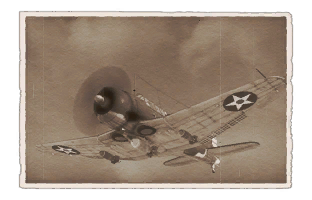
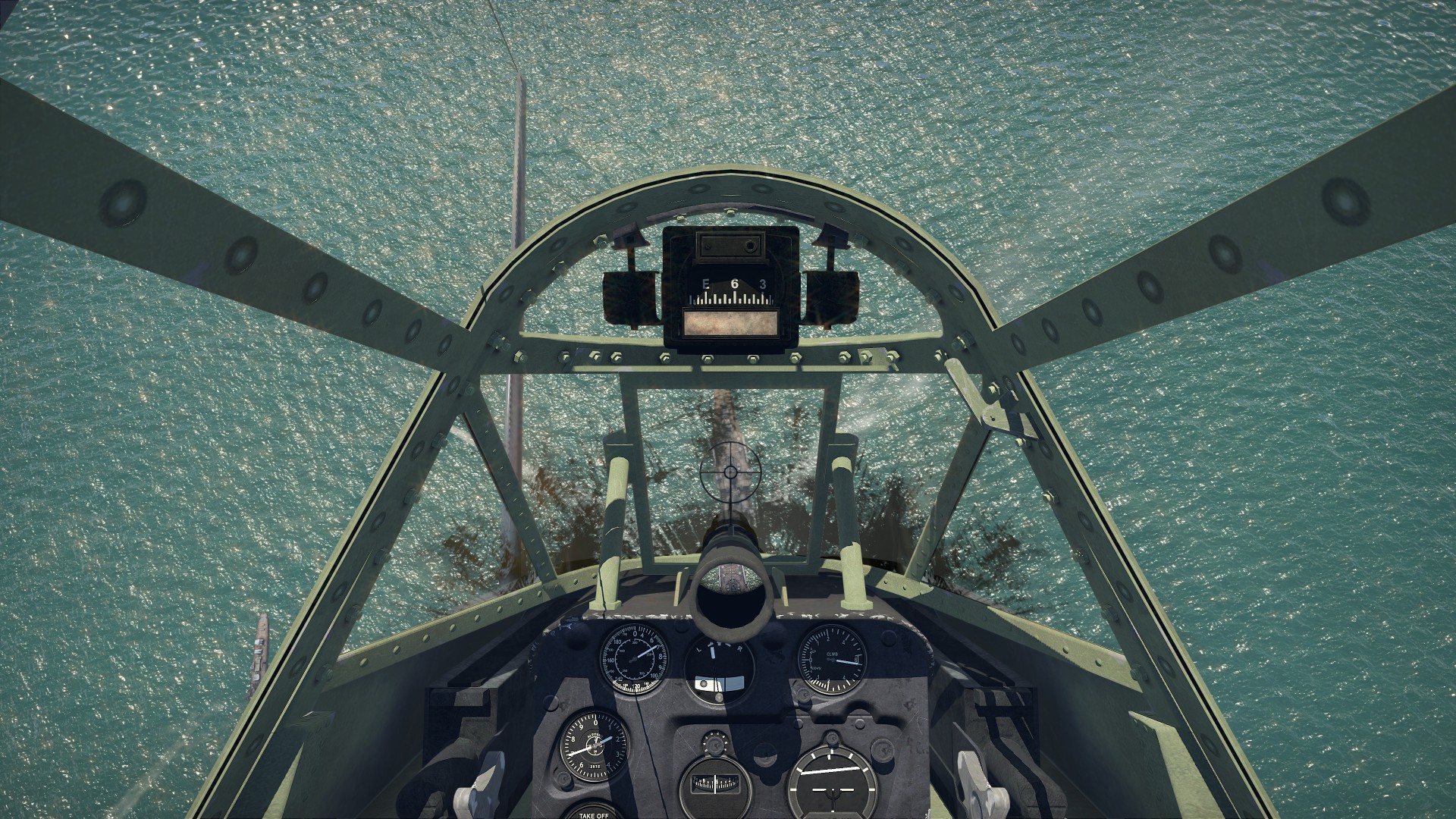
 PROS:
PROS: CONS:
CONS:
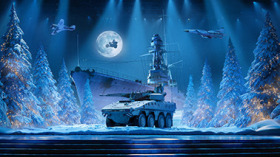
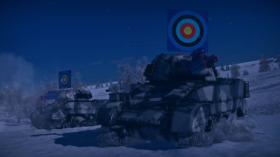

Comments (31)
Would be very useful in realistic and simulator battles.... except if you can't use it in tank simulator battles
But you cant use it realistically because bomb splash damage will kill you if you drop at 400m
So the SBD is great at pulling out eh?
Pulling out can be a somewhat effective measure, for reducing the potential future population, of an otherwise empty carrier. Bombs away. :-)
Why'd you have to fix it's FM in AB :( It was so much fun flying backwards upside down and gaining altitude...
Read that the SBD had more air kills than losses...no kidding! According to the book I have called 'Navy & Marine Corps Aircraft of WW2: Dive & Torpedo Bombers',the Dauntless did just that...claiming 138 enemy air kills against 43 SBD's lost...Kill-Loss ratio of approx. 3 to 1...& most of those 43 SBD's lost were in the early days of the Pacific war. To all those facing the SBD: 'Don't judge it too lightly...It's got serious bite!!!'
now that you mention the SBD-4/5 when can we expect them? and the SBD-6? and what about FFAR rockets? there's photos of them mounted on SBDs
The american Ju-87 :P
When you make your Artistic Renditions of the Plane/Tank etc. That could be done/made into real gameplay by most AAA developer's lol, is that what War Thunder will become one day?
Awesome article. Love the Dauntless. I hope we'll be getting the SBD-5 in the near future (and hopefully a re-instated F6F-3). Speaking of which, the Japanese aircraft tree still desperately needs it's missing dive bombers and attackers. Are we going to get the D3A2, B5N1, B5M, D4Y, B6N or Ki-32 any time soon? At the very least, it would be helpful if we got the missing bomb loads for the Japanese aircraft already in WT.
Gaijin please remove Crew Lock - it's the worst thing ever you added to this game.
Submit a complaint